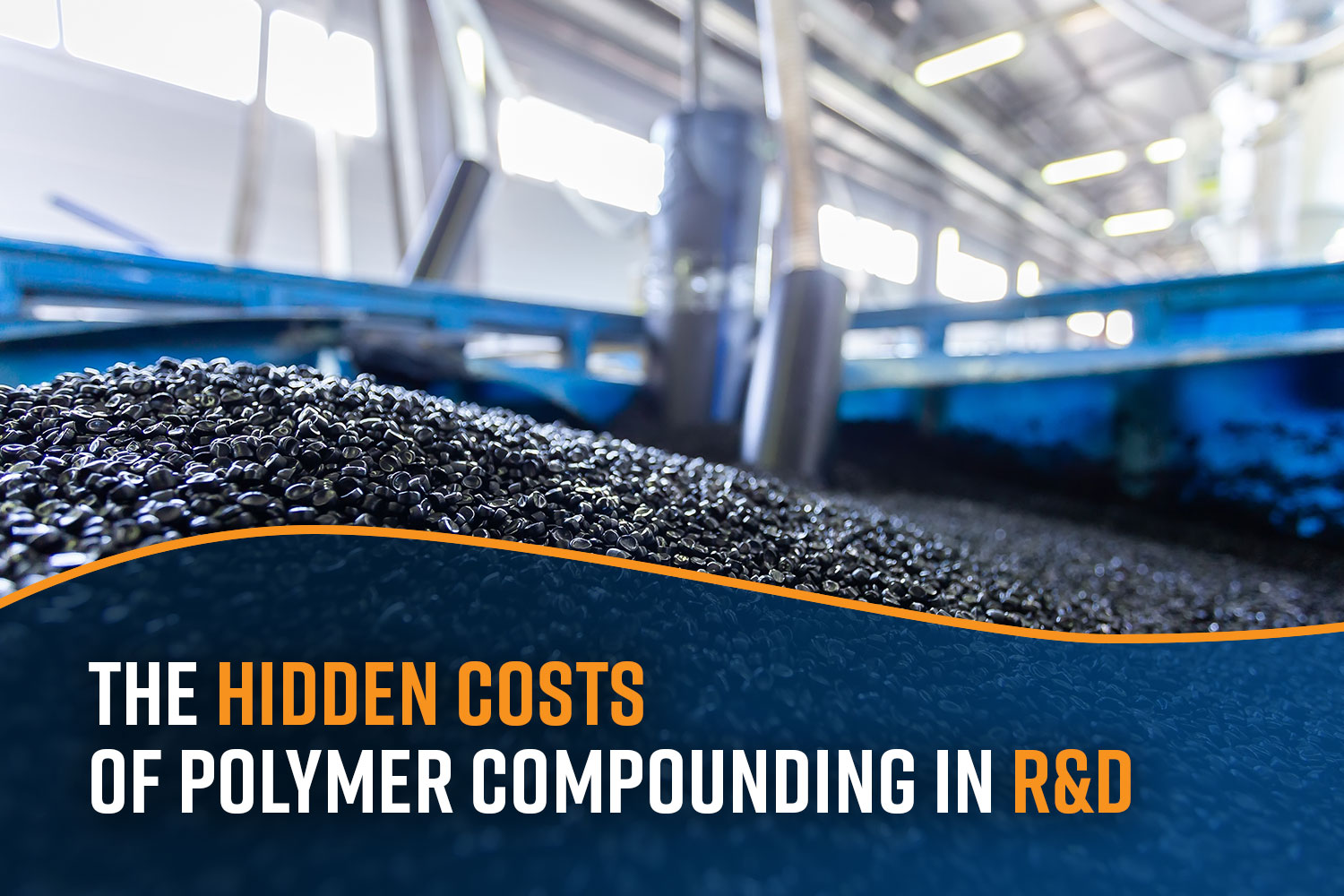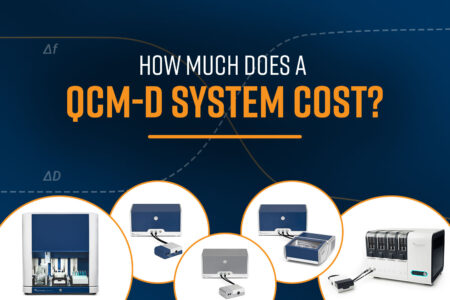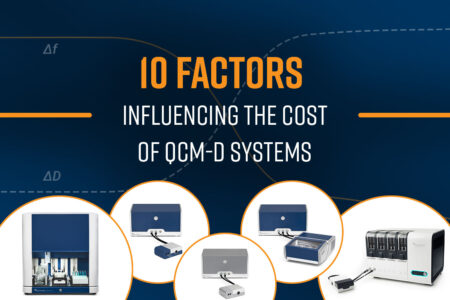Polymer compounding is fundamental to developing new polymeric materials in sectors such as automotive, aerospace, medical devices, and packaging. While traditional compounding methods remain prevalent in research and development (R&D) environments, they often come with hidden costs that impact time and resources.

What Is Traditional Polymer Compounding?
Traditional polymer compounding usually operates on industrial principles designed for high-volume production. In these workflows, base polymers are blended with additives, such as fillers, stabilizers, colorants, and plasticizers, using large-scale extruders.1 In R&D environments, where only small batches are needed, the process typically involves batch processing on pilot or production-scale equipment with extensive cleanup between formulations. These setups are not optimized for the iterative, small-batch needs of R&D. The true cost to R&D departments using traditional large-scale extruders extends far beyond the purchase price of raw materials. Resources are lost through inefficient compounding practices, creating a cascade of expenses. These costs can hinder the ability of R&D teams to iterate quickly, validate formulations efficiently, and make promising projects economically non-viable.
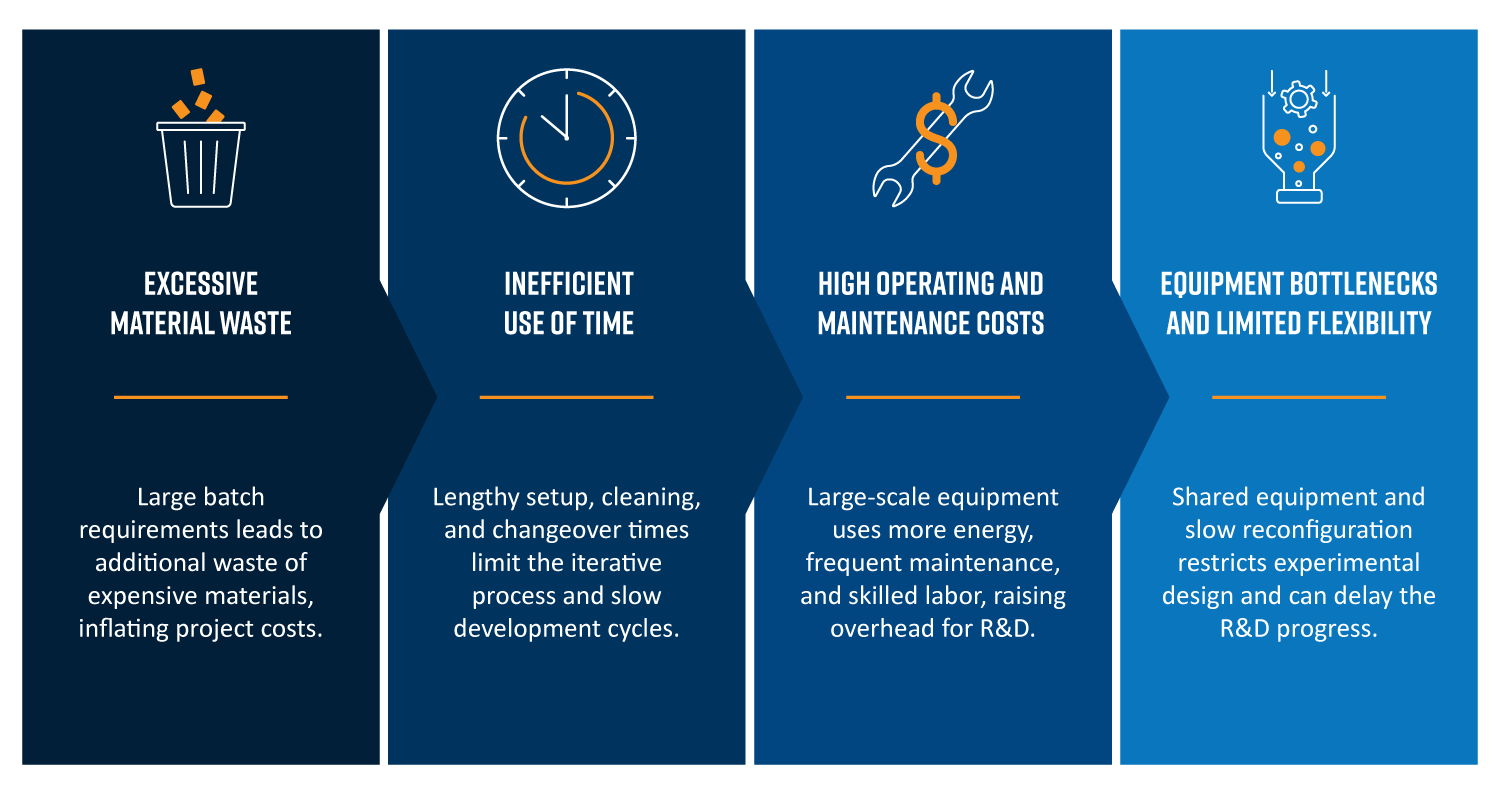
The Hidden Costs of Traditional Compounding in R&D
Relying on pilot-scale or production-scale equipment for R&D introduces a host of hidden costs that extend beyond the immediate expense of operation. These systems, while well-suited for manufacturing, are fundamentally misaligned with the small-batch, iterative nature of research. The result is an accumulation of inefficiencies, ranging from excessive material waste and prolonged setup times to reduced flexibility, and high operating overhead, that can significantly hinder both innovation and resource allocation.
Excessive Material Waste
Traditional compounding equipment is designed for production-scale operation, meaning even a “small” batch often requires significant quantities of polymer. Many extruders require large quantities just to fill the barrel or achieve stable flow. In an R&D environment, this scale is misaligned with experimental needs. Specialty polymers, bio-based resins, or functional additives can cost thousands of dollars per kilogram. Wasting these on early-stage trials significantly inflates project budgets. R&D often requires tens, if not hundreds, of iterations to optimize formulations. With the minimum batch size requirements with large scale extruders, large quantities of material will be used for a single project with only a small fraction of the compounded material being used for testing.
The consequences of traditional compounding in R&D environments are high material consumption per experiment, wasting raw materials and additives during trial-and-error cycles and greater cost per formulation, especially with expensive or novel additives. There are also significant costs associated with the excess compounded materials including storage, disposal costs and inventory management and tracking systems. The result is that every formulation test consumes far more material and costs more than necessary.
Inefficient Use of Time
Time is one of the most valuable resources in R&D, yet traditional compounding often works against efficiency. Traditional compounding introduces delays that cascade through entire development programs. The batch size constraints mean formulations must be planned weeks in advance, scheduled around production priorities, and processed in large campaigns to minimize changeover costs.
Large-scale compounding equipment isn’t designed for frequent changeovers. Set up and tooling for each new formulation can take hours. Each formulation switch requires a complete system purge that could take up to 60 minutes and a deep cleaning between incompatible materials that could take several hours. When each new formulation requires extensive preparation and cleanup, the number of iterations that the researchers can achieve are limited. These inefficiencies delay development timelines and reduce throughput in high-paced R&D environments. In fast-moving markets, this delay can mean the difference between market leadership and obsolescence.
High Operating and Maintenance Costs
When large-scale compounding equipment is used for R&D purposes, they incur high operational overheads and offer poor return on investment. Running a large-scale extruder to process a small batch consumes far more energy than a lab-scale system. Also, energy consumption is disproportionately high for small batches. Aggressive fillers like glass fibers, carbon black, or nanoparticles accelerate equipment wear and tear on the system resulting in frequent maintenance, which further increases cost. Downtime for cleaning and recalibration adds to the overall cost of experimentation. Skilled technicians are required for setup, cleaning, and troubleshooting, adding hidden labor expenses to every formulation run. Over time, these costs make traditional compounding unsustainable for iterative R&D, especially when compared with modern, small-batch, purpose-built systems.
Equipment Bottlenecks and Limited Flexibility
R&D teams often share access to compounding equipment with pilot-scale or even production teams, creating scheduling conflicts and bottlenecks. If the equipment is tied up for scale-up trials or production-quality runs, small-batch R&D experiments get pushed back. Traditional extruders and mixers are not easily reconfigured. Changing screw designs, barrel lengths, or feeder setups takes significant time and expertise. Exploring new process conditions, such as unusual filler loadings or reactive additives, may be impractical on large machines, restricting the experimental design space. These limitations force compromises in experimentation, reducing the ability of researchers to fully explore innovative formulations while simultaneously impeding production.
Micro compounding
Polymer development is increasingly relying on dedicated lab-scale compounding systems and automated formulation platforms. These tools are designed with R&D workflows in mind and address many of the limitations of traditional methods including smaller batch sizes, programmable runs, rapid iterations, automated dosing, easy cleanup and compact energy efficient designs. By streamlining formulation development, these systems reduce waste, lower costs, and significantly accelerate time to market.
Xplore’s line of micro compounders are reliable systems that are ideal for cost-effective R&D, leading to reduced time-to-market and accelerated formulation development (Figure 1). The vertical design of the mixing screws delivers thorough mixing with enhanced removal of entrapped gases so that the compounded material exhibits identical properties in its entirety, thus ensuring unparalleled consistency. They can compound polymer batches as small as 2 g up to 40 g or offer continuous production up to 4kg/hour. This system is fast, easy to clean up, benchtop, compact, and can achieve up to 25 iterations in a single day.
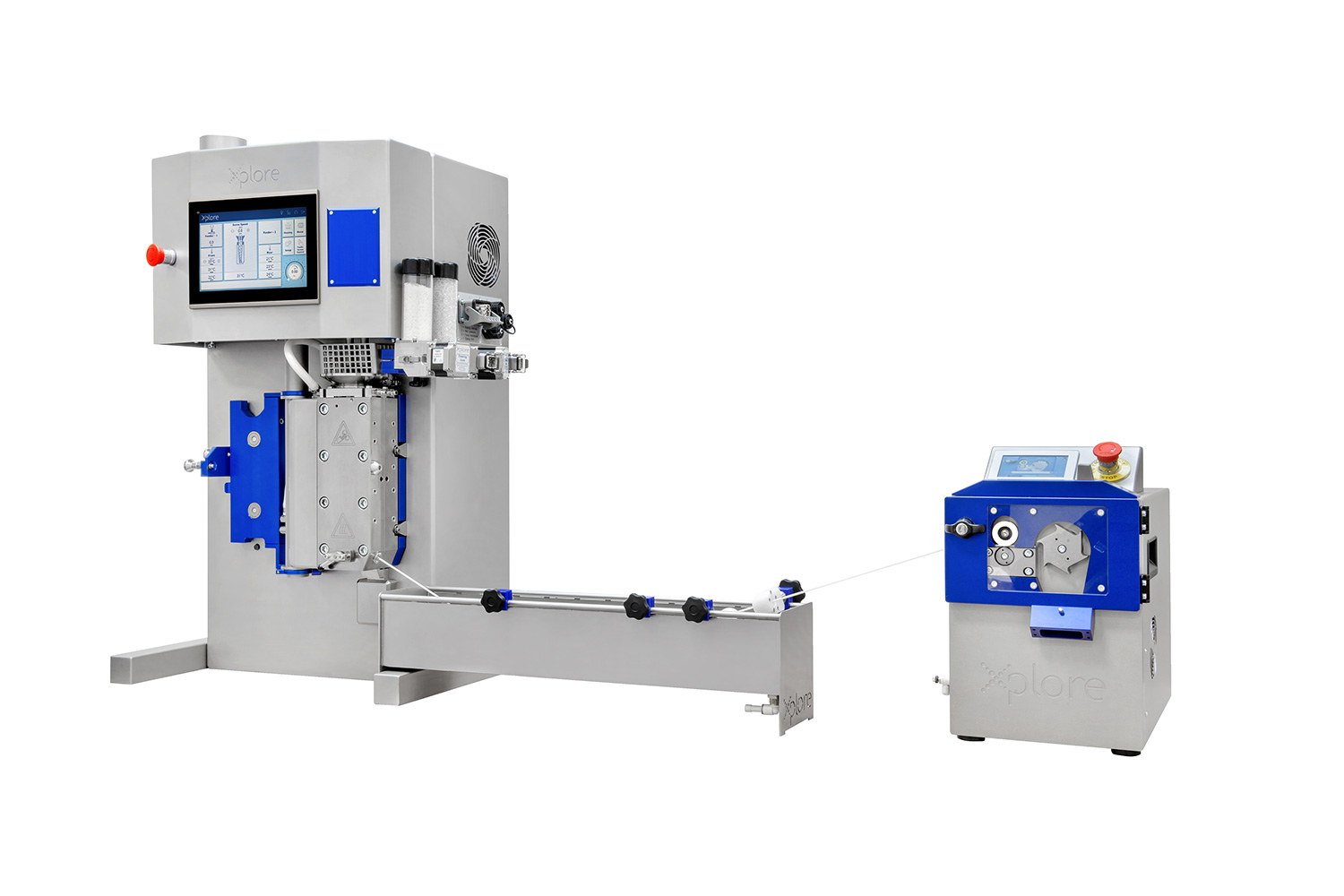
Conclusion
While traditional polymer compounding equipment remains essential in production environments, its use in R&D can introduce hidden costs that slow progress and inflate budgets. Material waste, inefficiencies, variability, and equipment bottlenecks are all symptoms of using the wrong tools for the job.
Many organizations are recognizing that the R &D infrastructure for polymer compounding isn’t just a technical decision but it’s a strategic investment in innovation capability. Investing in R&D-specific micro compounding solutions can dramatically enhance formulation workflows, providing faster iteration, higher precision, and better use of resources. These organizations enjoy sustainable competitive advantages as they accelerate development cycles, reduce costs, and bring superior products to market faster.
References
- Silviya, E. K.; Varma, S.; Unnikrishnan, G.; Thomas, S. Compounding and mixing of polymers. In Elsevier eBooks; 2009; pp 71–105. https://doi.org/10.1533/9781845696429.1.71. ↩︎

